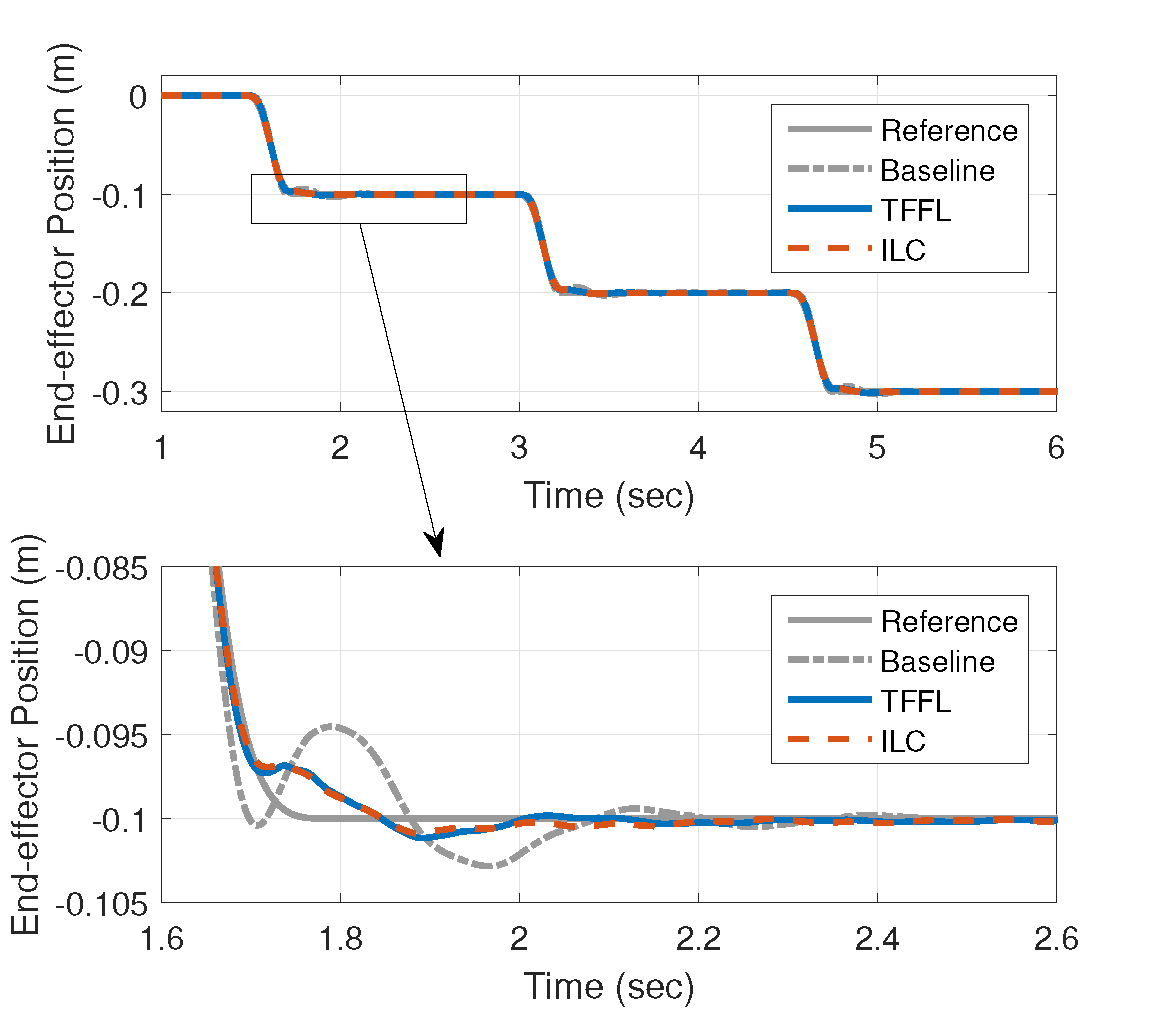VIBRATION CONTROL OF INDUSTRIAL ROBOT
Contents:
- Introduction
- Motion Control of Flexible Joint Robot
- Vibration Suppression of Flexible End-Effector
- Learning Control for Task Specific Industrial Robots
- Publications
- Sponsors
Vibration Control of Industrial Robot
Introduction
Precise motion control is desired in a variety of industrial robot applications. In order to achieve precise and rapid rest-to-rest motion, the overshoot and the residual vibration caused by flexibility of robots should be minimized. To make robot motion more accurate, several research topics are introduced, including motion control of flexible joint robot, vibration suppression of flexible end-effector , and learning control for task specific industrial robots.
Motion Control of Flexible Joint Robot
This work try to improve trajectory tracking accuracy of robots with flexible joints. A MATLAB/SimMechanics simulator for 6-joint robot is developed. Both rigid body robot dynamics and joint flexibility effects are modelled in this simulator. For very soft joint, the simulation shows accutate trajectory tracking can be achieved using multiple sliding surface control (MSSC) that takes advantage of the model of robot dynamics and sensing from actuator and robot joints/links.
Vibration Suppression of Flexible End-Effector
This work try to suppress vibration for robot with flexible payload / end-effector. The flexibility in flexible end-effector mainly comes from link flexibility. A modified input shaping technique, which is designed to work without slowing down the shaped motion, is implemented in this work. Acceleration at the end tip of payload shows the performance of the vibration suppression.

Learning Control for Task Specific Industrial Robots
Iterative learning control (ILC) is a strategy that allows a control system to improve its performance by making use of the error signals collected from previous iterations. A prerequisite of using ILC is that the output reference has to be repetitive from trial to trial. A full run of ILC training (taking non-negligible time) is needed when there exist small changes in the reference signal. This paper introduces a new approach to extrapolate the converged ILC policies to previously unseen tracking problems. A time-frequency domain mapping is constructed to approximate the ILC policy for a group of trajectories used in a particular task, say spot welding. We also introduce the idea of feature-frequency space, where the ILC policies from different trajectories can be encoded into a single model. This model can generate a control policy that performs comparably to the ILC policy while having the advantage of not requiring a full training for a new trajectory. The proposed time-frequency domain feedforward learning (TFFL) method could achieve similar performance as the standard ILC.

Publications
Y. Zhao, C. Wang, X. Yu, and M. Tomizuka, “Complete Dynamic Modelling of Flexible Joint Robots,” in ASME Dynamic Systems and Control Conference (DSCC), 2015.
Y. Zhao, W. Chen, T. Tang, and M. Tomizuka, “Zero Time Delay Input Shaping for Smooth Settling of Industrial Robots,” in IEEE International Conference on Automation Science and Engineering (CASE), 2016
C.-Y. Lin, W. Chen, and M. Tomizuka, “Learning Control for Task Specific Industrial Robots,” in IEEE Conference on Decision and Control (CDC), 2016
